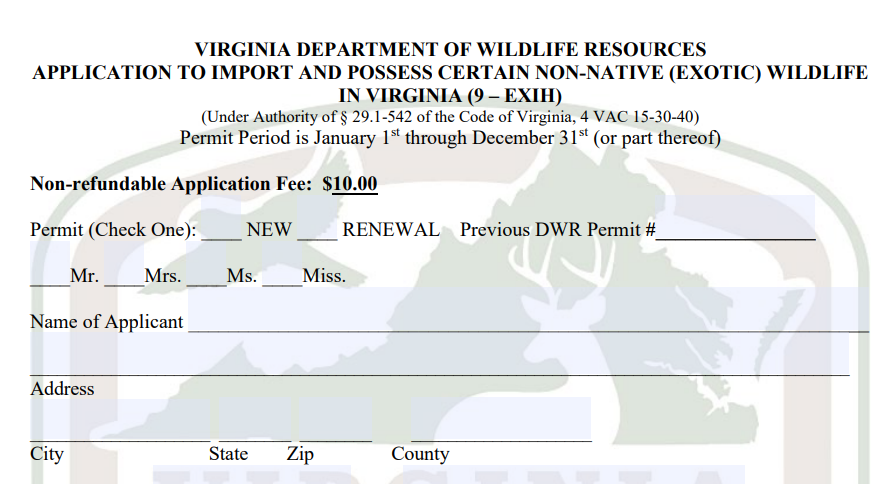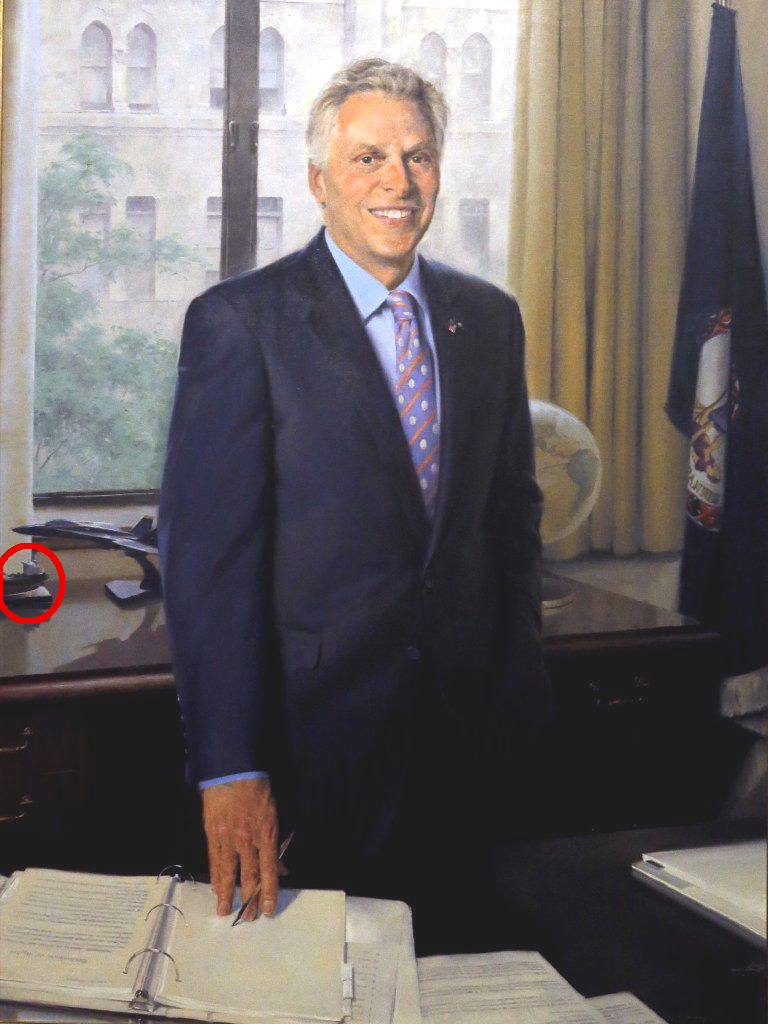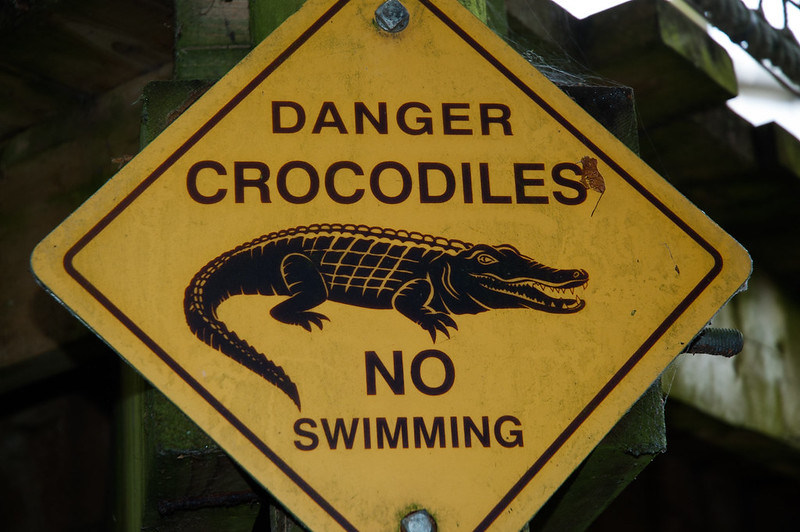
the range of alligators in North Carolina includes Merchants Millpond State Park, just south of the Virginia border
Source: North Carolina Wildlife Resources Commission, North Carolina Alligator Management Plan (Figure 2)

the range of alligators in North Carolina includes Merchants Millpond State Park, just south of the Virginia border
Source: North Carolina Wildlife Resources Commission, North Carolina Alligator Management Plan (Figure 2)
Alligators (Alligator mississippiensis) are living just south of Dismal Swamp in Merchants Millpond State Park, North Carolina, and at Kitty Hawk. None live naturally in Virginia - yet.
There is one adult alligator buried in the Pittsylvania County landfill. In 2006, a trucker ran over the unfortunate reptile in Florida and brought the carcass to Virginia. Wildlife officials confiscated it because alligators were a protected species. The alligator species is not listed as a "threatened or endangered" species by the US Fish and Wildlife Service now, but they resemble endangered crocodiles.
The trucker's plans to make a pair of boots were blocked. The dead alligator was seized and ultimately buried in the Virginia landfill.1
The North Carolina Wildlife Resources Commission authorized a hunting season in 2018, since the population had increased sufficiently within that state. The first legal hunt that year led to the harvest of one 20-year old alligator.2
A warming climate may result in a natural range expansion northward across the border into Dismal Swamp. The adults in Merchants Millpond State Park are living at the edge of their range. Some may decide one day to cross the state border, but a more likely migration route is up the Pasquotank River. Whenever alligators arrive, they are unlikely to breed within Virginia because of the cold temperatures.
However, if the climate warms significantly, alligators could adapt. Crocodilians such as alligators are remarkably capable of withstanding climate change, perhaps because they incubate their eggs at the same temperature wherever they nest. In contrast, turtles incubate at different temperatures at different latitudes. As the climate warms or cools, crocodilians still reproduce successfully while other species suffer.
Crocodilians survived the changing conditions that led to extinction of the dinosaurs, and have lasted nearly 100 million years on earth. Before the asteroid impact 65 million years ago that wiped out the dinosaurs (except birds), a type of crocodilian lived in the swamps which ultimately became the Midlothian coal fields south of Richmond.3
As the climate warms, habitats change. Atlantic bottlenose dolphins are now breeding in the Chesapeake Bay, and alligators are living further north. A U.S. Fish and Wildlife Service biologist commented in 2014:4

the range of alligators could expand north into Virginia, if climate change results in warmer winter temperatures
Source: National Park Service, Jean Lafitte National Historical Park and Preserve
A state permit is required to keep a pet alligator or cayman in Virginia. The permit form notes:5

a state permit is required to keep an alligator in Virginia
Source: Virginia Department of Wildlife Resources, Application To Import And Possess Certain Non-Native (Exotic) Wildlife
In 2012, Virginia Department of Game & Inland Fisheries seized an alligator in Virginia Beach. They took it to the Virginia Living Museum in Newport News, which named him Stallone because its smile resembled that of actor Sylvester Stallone. The alligator lived in the cypress swamp exhibit for six years. In 2018, it was sent to Alligator Adventure in North Myrtle Beach. That site serves as a "retirement home" for captured alligators.6
The Wildlife Center near Staunton has reported admitting a seized alligator as a "patient." It was transferred to the Luray Zoo and Reptile Center. The small privately-owned rescue zoo is not accredited by the Association of Zoos and Aquariums, but has the required permits by state and Federal officials to keep exotic animals. It accepts wildlife that can not be released into the wild, simplifying the lives of local officials who have seized alligators but have no place to keep them.7
Alligator sightings occur every few years, in all regions of Virginia. The Virginia Department of Game and Inland Fisheries has concluded that all such sightings are from escaped or released pets. For example, in 2005 a four-foot-long alligator was killed in the City of Chesapeake. That same year, a fisherman in Falling Creek Reservoir in Chesterfield County used an oar to club to death a three-foot long alligator which he hooked.8
In 2018, the Virginia Department of Game and Inland Fisheries reacted to a report that a 2-foot long alligator had been seen in Great Dismal Swamp National Wildlife Refuge. The state agency responded in a post on Facebook that it was probably a pet which someone had released. Later in 2018, a pet four-foot long alligator got loose in Big Moccasin Creek near Gate City. State officials killed it, for public safety.9
In 2021, an alligator was spotted in the Chesapeake Bay at Calvert County. A local man set up a trap, using chicken on a hook, and the next morning killed the alligator using a crossbow. It was over seven feet long. That size suggested the alligator had been brought to Maryland and released, and was not locally-grown. A five-foot long dead alligator had been found in the bay in 2015, and was judged to have been an exotic pet released into the wild.10
In 2022, an alligator roamed freely on a parcel of private property in Loudoun County until people in a nearby vineyard spotted it. The owner told agents from the county's Department of Animal Services and the Virginia Department of Wildlife Resources that the alligator had been missing for a week. It was captured and confiscated along with two other alligators, a caiman and seven venomous snakes that all lacked required the state permits for exotic animals.
That same year, an alligator lived for three weeks in the City of Chesapeake before being captured by Chesapeake Animal Services. According to the Virginian-Pilot:11
In 2015, a person transporting an alligator from New York to a zoo in North Carolina stopped in Fairfax County to spend the night. Another guest at the hotel looked outside his door at midnight and saw the alligator had escaped from its enclosure and was walking loose. Police officers called to the scene were surprised to discover that the alert was real, with one reporting back:12

in 2025, a hotel guest spotted an alligator outside his door in Fairfax County
Source: Fairfax Police Department, What’s poppin'? A gator at your motel door, apparently
Alligators which escape can survive in the wild. In 2007 Stafford County police responded to a report that there an alligator was an alligator underneath a car, in a subdivision. The local animal control officer trapped it. The condition of the skin indicated that the alligator had spent a year in the wild. It may have been a farm-raised alligator or a pet, but it had been on the loose in Aquia Creek. 25 years earlier, another escaped/released alligator had been shot in Accokeek Creek.
In 2021, an angler caught an alligator in the Potomac River in Calvert County, Maryland, and made gator nuggets from his catch. A second alligator was spotted in the river in St. Mary's County, but it evaded being caught.
In 2025, a resident in a houseboat docked at the DC Wharf observed an allligator in the Potomac River. While still wearing pajamas, he scooped it up in a fishing net. Animal Control in the District of Columbia sent the alligator to a sanctuary in Pennsylvania. Wildlife specialists assume those alligators had been kept as illegal pets, then released into the wild when they grew to a size beyond what the pet owner desired.13
To survive freezing water at the northern end of their range, North Carolina's alligators stick their noses out of the water before the ice completely seals the surface. In 2019, 18 alligators at Shallotte River Swamp Park & Outdoor Adventure Center entered what the local manager called "a state of brumation, like hibernating."14
The official portrait of Gov. Terry McAuliffe includes a small alligator. The picture emphasizes him signing paperwork to restore voting rights to felons who have completed their sentences. The alligator is a humorous reference to a fund-raising stunt when McAuliffe was a Democratic Party official raising money for President Bill Clinton.15

in his official portrait, Gov. Terry McAuliffe included an alligator
Source: Richmond Times-Dispatch

at some point, swimmers in Virginia will need to watch out for alligators
Source: Flickr